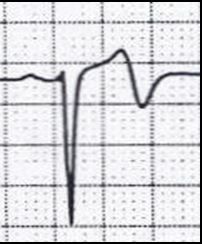Thus t wave inversions in leads v1 and v2 may be fully normal.
Inverted t wave on ecg causes.
If the readings show different characteristics then you have inverted t waves.
The t wave should be concordant with the qrs complex meaning that a net positive qrs complex should be followed by a positive t wave and vice versa figure 17.
Causes of t wave abnormality on ecg.
Inverted t wave is considered abnormal if inversion is deeper than 1 0 mm.
Inverted t waves are always noted in the avr and v1 leads.
Inverted t waves found in leads other than the v1 to v4 leads is associated with increased cardiac deaths.
In general an inverted t wave in a single lead in one anatomic segment ie inferior lateral or anterior is unlikely to represent acute pathology.
Inverted t waves associated with cardiac signs and symptoms chest pain and cardiac murmur are highly suggestive of myocardial ischaemia.
Inverted t waves mean on an ecg that you should go for further testing.
In normal ecg readings the t wave should be upward.
Otherwise there is discordance opposite directions of qrs and t which might be due to pathology.
The t wave is the ecg manifestation of ventricular repolarization of the cardiac electrical cycle.
There are several causes which may cause abnormal inversion of t wave.
The t wave is normally upright in leads i ii and v3 to v6.
Causes of inverted t waves.
The interpretation of the ecg in the context of the individual patient presentation is mandatory.
For instance a single inverted t wave in either lead iii or avf can be a normal variant.
And variable in leads iii avl avf v1 and v2.
A negative t wave is also called an inverted t wave.
Here are some of the most common reasons for inverted t waves.

